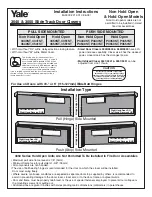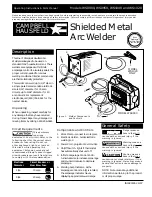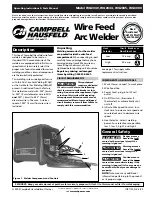
MedWeld 4000 Overview
1 - 22
Modified: 12/16/08
MedWeld 4000 Operator’s Guide
M-032116 Programs #T03300, #T02300 and #T02400
MFDC Control Description
The MedWeld 4000 uses a
Medium Frequency DC Inverter
(MFDC)
with two different options:
•
A Type 1 (Medar) inverter, using software T02300.
•
A Type 2 (Common) inverter, using software T02300.
The MFDC replaces the standard silicon-controlled rectifiers (SCR
packs) to perform the power conversion required to weld at frequencies
from 400–2,000 Hz.
Advanced options provide added flexibility to the WTC design, which
provides full-function and programming capabilities. You can program
99 independent weld schedules, then assign a weld schedule to one of 99
independent steppers (to compensate for decline in current density due
to mushrooming or alloying of the electrodes).
The control compensates for changes in the welding environment by
monitoring the voltage and increasing the current as required to ensure
consistent welds. The primary current (I) changes as the voltage
fluctuates. (For example, if the weld energy (E) drops, the processor
firing phase shifts forward (to increase I) until E stabilizes.)
You program a weld function specifying current in two ways:
•
To use either Automatic Voltage Compensation (to maintain a
desired primary voltage) or
•
Automatic Current Compensation (to maintain constant secondary
current).
The MedWeld 4000 can perform the weld, delay, slope, pulsation or
timing functions required by your application. Other functions allow
you to control outputs and monitor the status of inputs.
Weld Processor
Interface to the
Inverter
The interface between the weld processor and the MFDC inverter has
three functions:
•
It allows the processor to specify the amount of current to the work
piece,
•
It allows the inverter to alert the processor of fault conditions it
detects during the weld and
•
Provides weld data to the processor.
The inverter responds to the single-phase timing firing signals from the
weld processor. The weld processor tells the inverter when to pull in the
main isolation contactor and receives the signal from the inverter when
















































